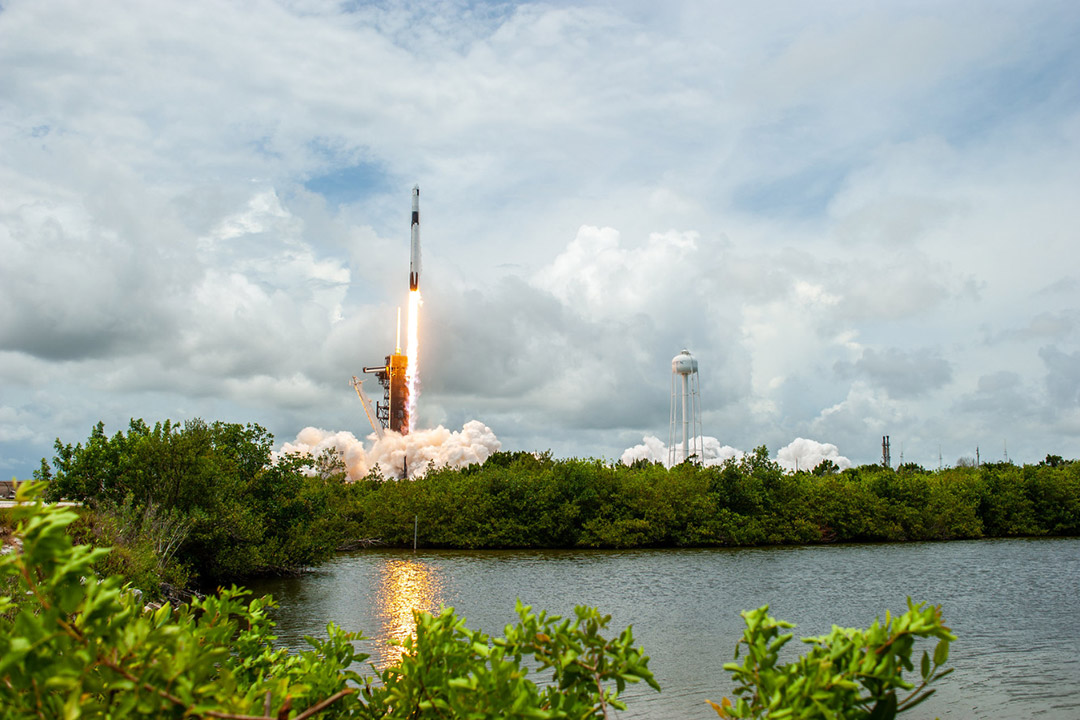RIT wins award to develop game design training platform as part of NASA’s Moon-to-Mars Mission
NASA/Tony Gray and Kevin O’Connell
The SpaceX Falcon 9 rocket lifts off at NASA's Kennedy Space Center in Florida on June 3.
RIT faculty-researchers will develop a game-design training system that could help astronauts maintain balance, motor skills, and other cognitive functions while in space.
NASA, in partnership with the National Space Grant Foundation, has selected six university teams, including RIT, to develop innovative design ideas that will help NASA advance and execute its Moon to Mars exploration objectives. The selections are a part of the 2022 Moon to Mars eXploration Systems and Habitation (M2M X-Hab) Academic Innovation Challenge, sponsored by NASA’s Advanced Exploration Systems (AES) division.
RIT will build a Gamification and Performance-Based Monitoring of Sensorimotor Training Activities system that will integrate gaming activities with real-time physiological measurements and motion capture information. Activities will be designed to assist with maintenance of balance, hand-eye coordination, cognitive functions, and muscle tone. Knowledge gained from the platform could support NASA’s knowledge base about the use of gamification for sensorimotor training activities.
The research efforts will be conducted by multi-disciplinary teams during the 2021-2022 academic year and the teams will be mentored by NASA technical experts and led by university faculty members including Kathleen Lamkin-Kennard, Ehsan Rashedi, Beth DeBartolo, from the Kate Gleason College of Engineering; David Schwartz, from the School of Interactive Games and Media; Bill Brewer, from RIT’s Exercise Science Program; and Esa Rantanen from the department of Psychology. Students from each of the faculty labs and classes will also participate in the design process.
Winning teams receive awards ranging from $15,000 to $50,000 to assist in designing and producing studies, research findings, or functional products that could advance capabilities and lower technology risks related to NASA’s Moon to Mars space exploration missions.










